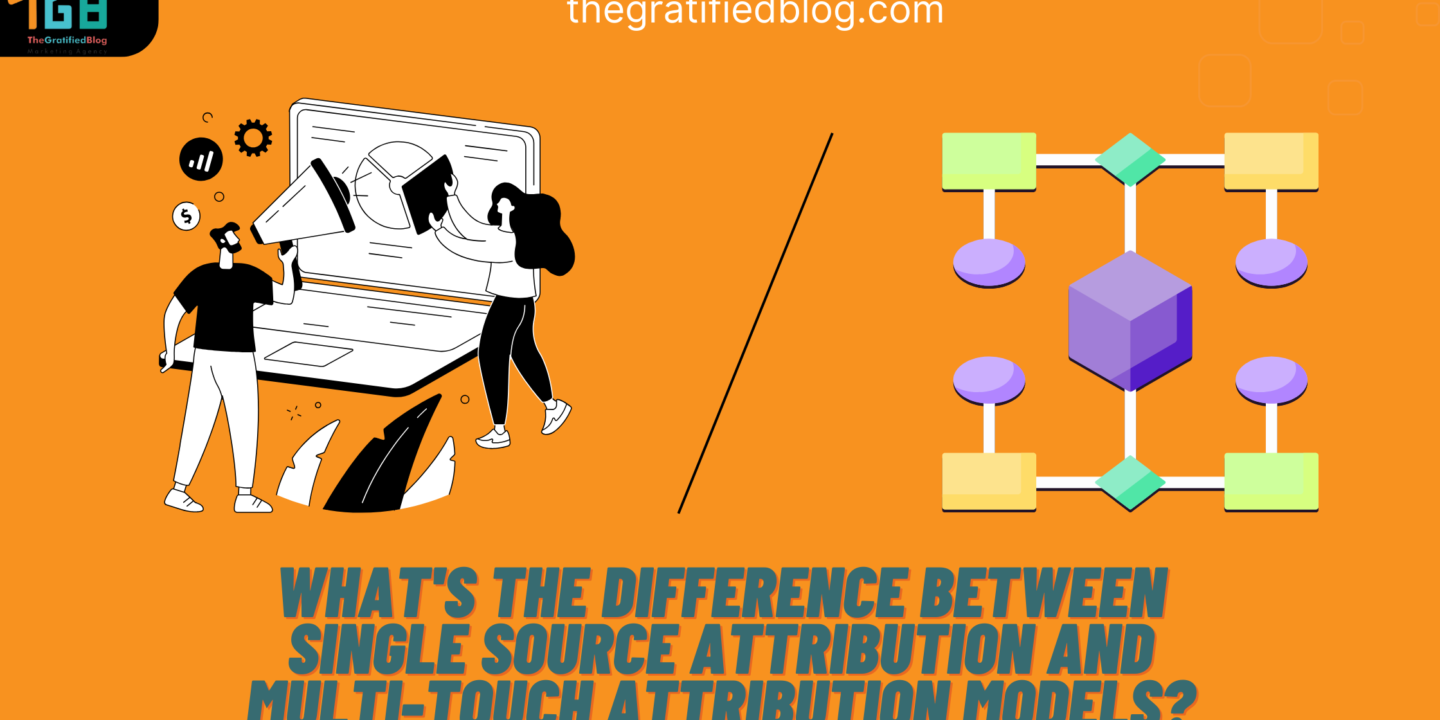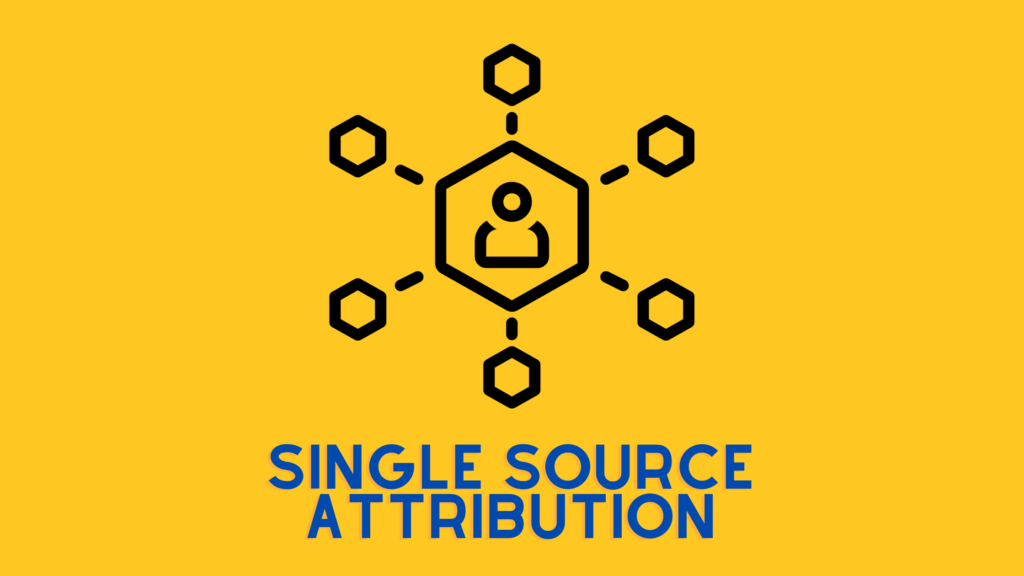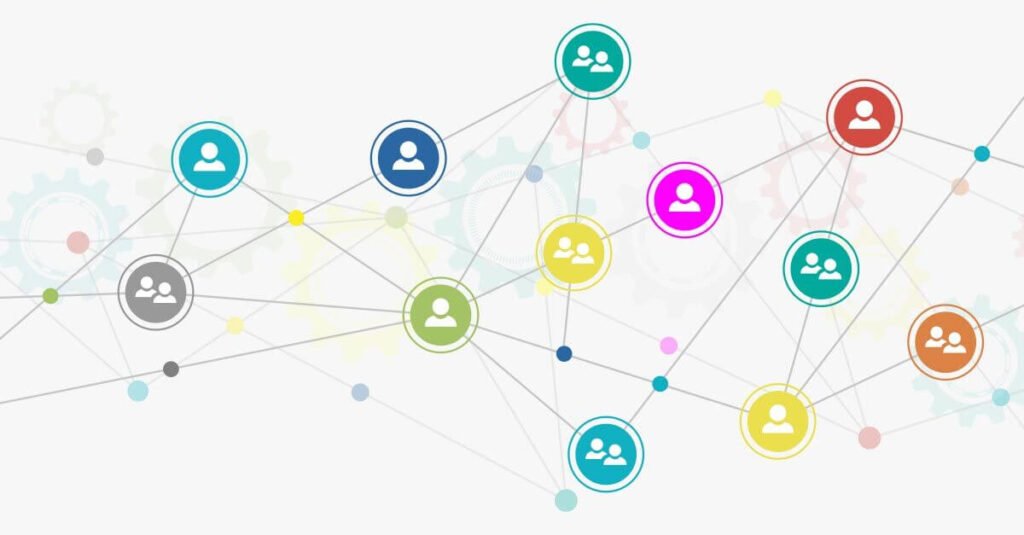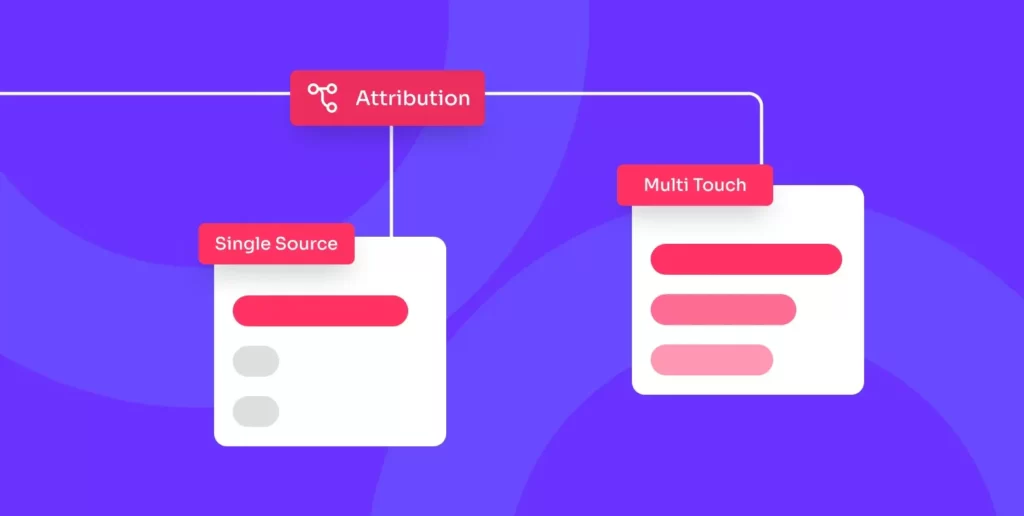
In the intricate and continually evolving realm of marketing and advertising, comprehending the effectiveness of your campaigns is paramount. Marketers wield an array of tools and methodologies to gauge the impact of their efforts. Among these, attribution models play a pivotal role in evaluating how various touchpoints contribute to conversions and success. What’s The Difference Between Single Source Attribution And Multi-Touch Attribution Models? Two fundamental approaches to attribution models are single-source attribution and multi-touch attribution.
This article will explore the difference between single-source and multi-touch attribution models and their strengths and limitations.
Single Source Attribution

Single-source attribution is the most straightforward method of the attribution model, where the entirety of credit for a conversion is attributed and given to a single touchpoint or channel.
The concept behind Single Source Attribution is that a single interaction is responsible for the final conversion, and it deserves all the credit.
Pros Of Single Source Attribution
- Simplicity: Single Source Attribution is easy to understand and implement. It’s a straightforward way of assigning credit for conversions.
- Clear Accountability: This model is ideal for situations where you want to hold a specific touchpoint or channel accountable for conversions. It provides a clear picture of the impact of that particular touchpoint.
- Useful For Certain Cases: In cases where a single touchpoint has a dominant influence on conversions, such as a direct response to a call-to-action, Single Source Attribution can be helpful.
Cons Of Single Source Attribution
- Oversimplification: The major drawback of Single Source Attribution is its oversimplification of the customer journey. In most cases, conversions result from multiple interactions, and attributing success to a single source may not accurately represent the customer’s journey.
- Neglect Of Other Touchpoints: Single Source Attribution neglects the contributions of other touchpoints in the funnel by giving all the credit to one touchpoint. This can lead to misallocating resources and missed opportunities to optimize the customer journey.
- Inaccurate Reflection Of Reality: A customer journey is rarely linear, with a single touchpoint leading to conversion. In today’s multi-channel world, customers interact with brands through various touchpoints, and Single Source Attribution may not reflect the reality of these complex journeys.
Multi-Touch Attribution Models

Recognizing the limitations of Single Source Attribution, marketers and analysts have developed more sophisticated Multi-Touch Attribution Models. These models acknowledge that customers often engage with multiple touchpoints before deciding.
Multi-Touch Attribution attempts to distribute credit across these various touchpoints, reflecting the complex and non-linear nature of customer journeys.
There are several Multi-Touch Attribution Models, each with its own approach to distributing credit. Here are some of the most common ones:
1. Linear Attribution
Linear Attribution distributes equal credit to every touchpoint in the customer journey. In this model, all touchpoints are considered to have an equal influence on the final conversion. It provides a more balanced view of the customer journey than Single Source Attribution.
Pros Of Linear Attribution:
- Fairly distributes credit to all touchpoints, acknowledging their roles in the conversion path.
- It helps identify which touchpoints are most frequently interacted with throughout the journey.
Cons Of Linear Attribution:
- It may not accurately represent the varying levels of influence that different touchpoints have on the conversion.
- Fails to distinguish the most critical touchpoints.
2. Time Decay Attribution
Time Decay Attribution gives more excellent credit to touchpoints in closer temporal proximity to the conversion. Event. The assumption is that interactions closer to the conversion are more influential.
Pros Of Time Decay Attribution:
- Acknowledges the recency of touchpoints, which is particularly important for businesses with shorter sales cycles.
- Provides a better representation of how customer interest evolves as they move closer to conversion.
Cons Of Time Decay Attribution:
- Ignores early-stage touchpoints that may have initiated the customer’s journey.
- It may only suit businesses with short sales cycles where early interactions significantly nurture leads.
3. Position-Based Attribution (U-shaped Attribution)
Position-based attribution, often called U-shaped attribution, gives higher Assigned credit to the initial and final touchpoints in the customer journey. These touchpoints are seen as initiators and closers of the conversion process, while the intermediate touchpoints receive less credit.
Pros Of Position-Based Attribution:
- This Recognizes the importance of the first touchpoint (initiation) and the last touchpoint (conversion).
- Offers an equitable perspective on the customer journey while acknowledging the significance of crucial interactions.
Cons Of Position-Based Attribution:
- It needs to account for the specific influence of middle touchpoints, potentially underestimating their importance.
- It may not accurately represent all customer journeys, as not all conversions follow a linear path.
4. Custom Attribution Models
Some businesses develop custom attribution models tailored to their specific needs and goals. Custom models allow companies to define rules for assigning credit to various touchpoints.
This highly flexible approach accommodates unique aspects of a business’s customer journey.
Pros Of Custom Attribution Models:
- Customization allows businesses to factor in industry-specific considerations and unique customer behaviors.
- It can provide a more accurate representation of the actual impact of touchpoints on conversions.
Cons Of Custom Attribution Models:
- Developing and maintaining custom models can be resource-intensive.
- A profound comprehension of the customer is essential for this journey and data analysis capabilities.
5. Algorithmic Attribution
Algorithmic Attribution uses machine learning and data analysis to determine the credit allocation for each touchpoint automatically. These models consider various factors to calculate attribution, including time, touchpoint sequence, and customer behavior.
Pros Of Algorithmic Attribution:
- Offers a data-driven approach to attribution, which can adapt to changing customer behavior.
- Provides a granular view of touchpoint influence, accounting for complex customer journeys.
Cons Of Algorithmic Attribution:
- It Requires substantial data and computational resources.
- It can be challenging to implement without the necessary expertise.
What’s The Difference Between Single Source Attribution And Multi-Touch Attribution Models?

Now that we’ve explored the fundamental concepts of Single Source and Multi-Touch Attribution, let’s highlight the key differences between these two approaches:
1. Credit Distribution
- Single Source Attribution assigns all credit for a conversion to a single touchpoint or channel.
- Multi-Touch Attribution models allocate credit among various touchpoints, reflecting the complexity of customer journeys.
2. Complexity
- Single Source Attribution is simple and easy to implement.
- Multi-Touch Attribution models, such as Algorithmic Attribution, can be complex and require advanced data analysis.
3. Accuracy
- Single Source Attribution can be accurate in cases where a single touchpoint directly leads to conversion.
- Multi-Touch Attribution models offer a more precise portrayal of customer journeys in multi-channel environments.
4. Use Cases
- Single Source Attribution is suitable for situations where a single touchpoint is overwhelmingly responsible for conversions.
- Multi-Touch Attribution models are ideal for businesses with complex customer journeys and multiple interaction points.
5. Resource Requirements
- Single Source Attribution is resource-friendly and does not require extensive data analysis or computational resources.
- Multi-Touch Attribution models, especially Algorithmic Attribution, demand substantial data and computational resources.
Choosing The Right Attribution Model

Choosing the suitable attribution model for your business is a critical decision. The choice should align with your goals, understanding of the customer journey, and available resources. Here are some steps to help you make an informed decision:
1. Analyze Your Customer Journey
Start by thoroughly understanding your customer journey. Consider the various touchpoints your customers interact with before making a decision. This analysis will provide insights into the complexity and non-linearity of your customer journeys.
2. Define Your Goals
What are your marketing and business objectives? Do you want to emphasize the first interaction, the last interaction, or a balance between both? Your goals will influence your choice of attribution model.
3. Assess Your Resources
Evaluate the resources at your disposal. Single-source attribute models are more accessible to implement and require fewer resources, while multi-touch attribute models can be more data-intensive and require advanced analytics capabilities.
4. Consider Industry And Business Specifics
Some industries and business models have unique customer behaviors and sales cycles. Custom Attribution Models can be valuable as they allow you to tailor the model to your requirements.
5. Experiment And Iterate
It’s essential to be open to experimentation and iteration. Start with an attribution model that aligns with your initial understanding of the customer journey and goals. Over time, refine your model as you gather more data and insights about how your customers engage with your brand.
Real-World Examples
To illustrate the differences between Single Source Attribution and Multi-Touch Attribution models, let’s explore a couple of real-world examples:
Example 1: E-Commerce Store
Envision owns an e-commerce store specializing in consumer electronics. A visitor arrives at your website after selecting a Facebook ad. They browse through several product pages and sign up for your newsletter. A week later, they receive an email with a special promotion and make a purchase.
- Single Source Attribution (Last-Click): This model would attribute all credit for the sale to the email, as it was the last interaction before the conversion. However, this ignores the fact that the Facebook ad and newsletter sign-up also played crucial roles in nurturing the customer to purchase.
- Multi-Touch Attribution (Linear Attribution): Credit would be evenly distributed among all touchpoints in a Linear Attribution model. This means the Facebook ad, newsletter sign-up, and email promotion would each receive a share of the credit, providing a more balanced view of the customer journey.
In this scenario, Multi-Touch Attribution provides a more accurate representation of the customer’s journey and the contributions of different touchpoints.
Example 2: B2B Software Company
Now, let’s consider a B2B software company that offers a subscription-based project management tool. A potential client comes across their brand through various touchpoints:
- They see a sponsored LinkedIn post.
- They visit the company’s website but need to sign up.
- They receive an email with a free trial offer a few days later.
- They participate in a webinar hosted by the company.
- Finally, after two weeks, they sign up for the software.
- Single Source Attribution (Last-Click): In this case, the Last-Click Attribution model allocates full credit to the last interaction, signing up for the software. However, this approach overlooks the influence of earlier touchpoints, such as the LinkedIn post, email, and webinar, which significantly convinced the client to sign up.
- Multi-Touch Attribution (U-Shaped Attribution): A U-Shaped Attribution model, which assigns more credit to the first and last interactions, would acknowledge the importance of the LinkedIn post and the final conversion. The email and webinar interactions would also receive some credit, reflecting their contribution to nurturing the lead.
For B2B companies with longer and more complex sales cycles, Multi-Touch Attribution models are often more appropriate as they consider the various touchpoints that influence a potential client’s decision.
Challenges In Attribution Modeling
While attribution models provide valuable insights into marketing effectiveness, they also come with challenges:
- Data Accuracy: Attribution models rely on accurate data, which can be challenging to obtain. Precise only or complete data can lead to good attribution results.
- Consistency: Consistency in attribution models is essential when comparing results over time. Frequent changes in your chosen attribution model can make it challenging to track progress.
- Customer Privacy: With increased concerns about data privacy, obtaining the necessary data to implement sophisticated Multi-Touch Attribution models may face regulatory and ethical challenges.
- Ad Blocking: The rise of ad blockers and privacy features in browsers can limit the tracking of user interactions, making it harder to collect data for attribution modeling.
- Subjectivity: The choice of the most suitable attribution model can be subjective and may vary from one organization to another. It’s essential to have a clear rationale for your choice.
The Future Of Attribution Modeling

The digital marketing terrain and the field of attribution modeling are continually changing. As technology, data analytics, and consumer behavior change, so do the methods for understanding marketing effectiveness.
Here are some trends and developments shaping the future of attribution modeling:
- Machine Learning and AI: Machine learning and artificial intelligence are increasingly integrated into attribution modeling. These technologies can analyze extensive datasets and identify patterns humans might miss, leading to more accurate attribution models.
- Cross-Device and Cross-Platform Attribution: With consumers using multiple devices and platforms, the future of attribution modeling must account for this complexity. Advanced models will aim to connect customer journeys across various devices and channels.
- Privacy and Regulation: As data privacy concerns continue to grow, marketers must find ways to conduct attribution modeling while respecting user privacy and adhering to evolving regulations.
- Custom Attribution Models: Businesses may opt for custom attribution models that reflect their unique customer journeys and data sources. These models will be tailored to suit specific industry and business needs.
- Integration of Offline Data: Attribution models will increasingly incorporate data from offline sources, such as in-store purchases, to provide a more comprehensive view of the customer journey.
Conclusion
Attribution models are essential tools for marketers To evaluate the efficiency of their campaigns and enhance their strategies.
While Single Source Attribution provides a straightforward way of assigning credit, Multi-Touch Attribution models recognize the complexity of customer journeys in today’s multi-channel world.
The choice between Single Source and Multi-Touch Attribution models depends on your specific business goals, customer journey complexity, and available resources. It’s essential to remember that no single attribution model is a one-size-fits-all solution.
Businesses often benefit from a hybrid approach, combining aspects of both single-source and Multi-Touch Attribution models to gain a more nuanced understanding of their customer journeys.
The key to successful attribution is continuously adapting and refining your model as you gather more data and insights, ensuring that your attribution strategy aligns with your evolving understanding of customer behavior and business goals.
By doing so, you can make informed decisions that drive marketing success and enhance your overall business performance.








No Comments